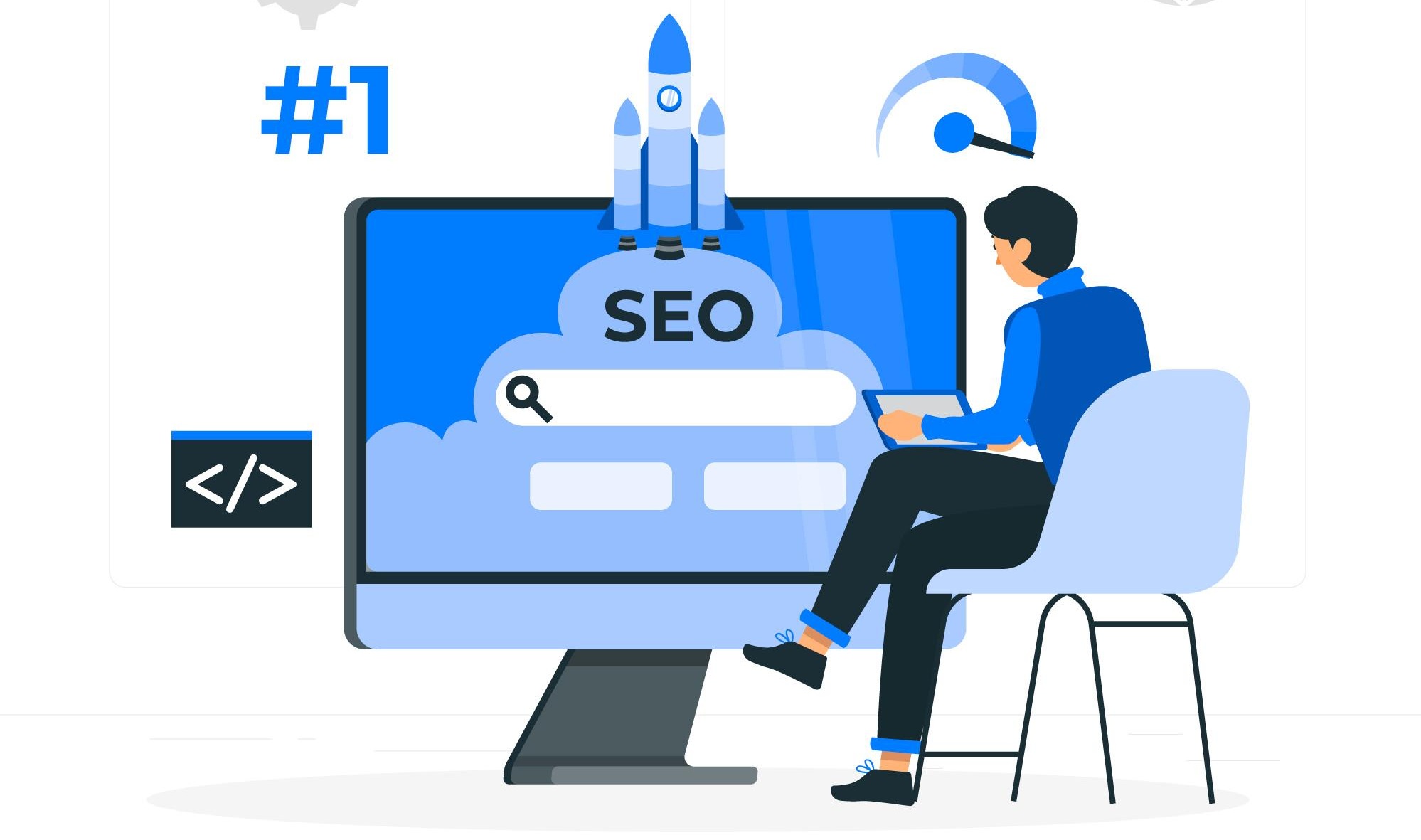On-Page SEO Factors: The Whole Nine Yards of On-page SEO
Have you ever searched for your business online, only to find your website not listed anywhere on the first 3 pages of Google?
I know this feeling; it hurts – especially after spending thousands of dollars on guest blogging and other off-page SEO activities.
Showing up on Google’s first page is not an easy task that can be achieved overnight. You have to put months of work into on-page SEO to move the needle in your favor – despite your off-page SEO efforts.
In this blog post, I’ll cover everything there is to know about on-page SEO – the whole nine yards.
So, if you are new to search engine optimization, you should read my blog post titled; on-page and off-page SEO, I’ve included a checklist in the linked blog to help you get started.
What is On-Page SEO?
On-page SEO is the process of taking actions on your website to improve its position on the search engine result page (SERP).
These activities include installing keywords in the content, optimizing meta title, meta descriptions, and adding internal links to relevant content.
For instance, you can notice I added multiple links in this blog post. Why? Because I wanted to improve my reader’s experience and on-page SEO of my blog post.
This means that on-page SEO activities are carried out on each page of your website to improve visibility.
In short, any manual changes you make to your website are a part of on-page SEO optimization – including design and web structure changes.
10 On-page SEO Factors That Google Considers (Step by Step Guide)
Okay, so now that we know what on-page SEO is, let’s look at on-page SEO factors that improve your site’s position in SERPs.
Step 1: Improving Content Elements
Improving content is one of the most important on-page SEO steps. It is what your web visitors came to consume.
Therefore, you should aim to provide maximum value and share every detail about the topic you are covering.
Remember that all on-page SEO activities stem from high-quality content written for the reader.
So make sure you deploy ample resources for writing high-quality content that’s linkable and shareable.
1. Page Content
In terms of on-page optimization, you need to make the content relevant to your website.
For example, if you are optimizing content for a YMYL site, make sure you link back to credible websites when stating facts.
This makes your content trustworthy and positively influences your search rankings.
Next, find out where your content falls in the buyer’s journey.
By targeting specific pain points in the buying process of your product/service, you create structured content that reaches the right person and at the right time.
| Buyer Journey Stage | Best Content Fit |
| Awareness Stage | Blogs posts and videos. |
| Interest Stage | Detailed guides, how-to blogs, educational videos |
| Desire Stage | Product/service comparison blogs, Product demos, discount offers. |
| Action Stage | Landing page |
Each stage of the buyer’s journey has a unique content piece to offer. Make sure your content at each step is SEO optimized with the right keywords.
Recommended Read: Writing Content for SEO: 6 Mistakes to Avoid
2. Keywords
Keywords are the cornerstone of all on-page SEO activities. Without proper keyword integration, you can’t expect your site to rank.
But before you go adding keywords in every paragraph, know this: Google strictly advises against keyword stuffing.
This means you can’t add keywords in every sentence if they don’t fit or make any grammatical sense.
Keyword optimization is interlinked with your content and your target audience’s journey.
For instance, adding TOFU keywords in the awareness stage is a great idea.
Follow that with MOFU keywords for the interest and desire stage, and end with BOFU keywords on your landing page.
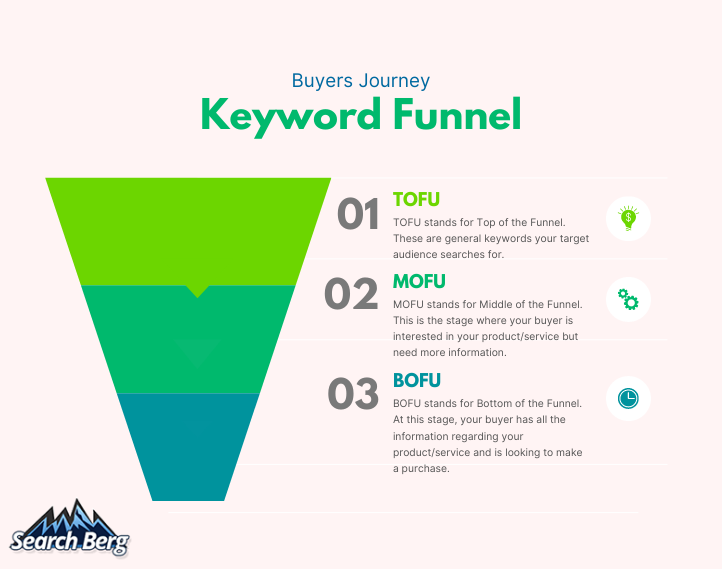
You can use free keyword tools like Ubersuggest and Answer the public. But if you want to go all out with your SEO, you can use Ahrefs or SEM Rush.
Just remember that you are writing for your readers, not search engines. That’ll help you limit your keywords to your content.
Step 2: Adding HTML Elements
HTML elements are source codes that tell search engines how to read your content. They encompass,
- Title tags
- Heading tags
- Meta description
- Image Alt tags
These tags structure your content and make your site search engine friendly.
1. Title Tag Optimization
A title tag is an HTML code that gives your website a title.
This factor alone isn’t going to shoot your SERP ranking. Still, combined with other on-page SEO factors, it positively impacts your search position.
Your title tag can be different from your content’s main title. Just make sure your title tag explains what’s inside your web page.
Adding keywords in your title tag is a plus because it increases your site’s chances of appearing in the search results against that particular keyword.
2. Heading Tags Optimization
Heading tags are used on a website to distinguish heading from sub-headings. They follow a hierarchy system from H1 to H6, with H1 being the title.
Heading tags give your content a refined structure by improving readability and help search engine crawlers quickly skim through your content.
Think of a search crawler like a human.
If you don’t install proper heading tags, crawlers will only see jumbled words with no structure, reflecting that your content isn’t structured for the reader.
3. Meta Description

Search engine optimizers reading this would throw their hands and say, “meta description isn’t a ranking factor.”
While they are partly correct, don’t let it stop you from adding a meta description to your site. Why? Because meta descriptions serve two primary purposes,
- They tell search engines what your content is about.
- They have a massive impact on your click-through rates.
A sound meta description gives searchers a good understanding of your website and its content.
Indirectly preventing unwanted visitors from clicking through to your site and increasing your bounce rate.
Here are the salient features of a killer meta description,
- It should be under 160 characters
- It should include one or two keywords max
- Avoid using numbers or symbols like (-,*,&)
- It should start and end with a sentence that keeps your reader wanting more.
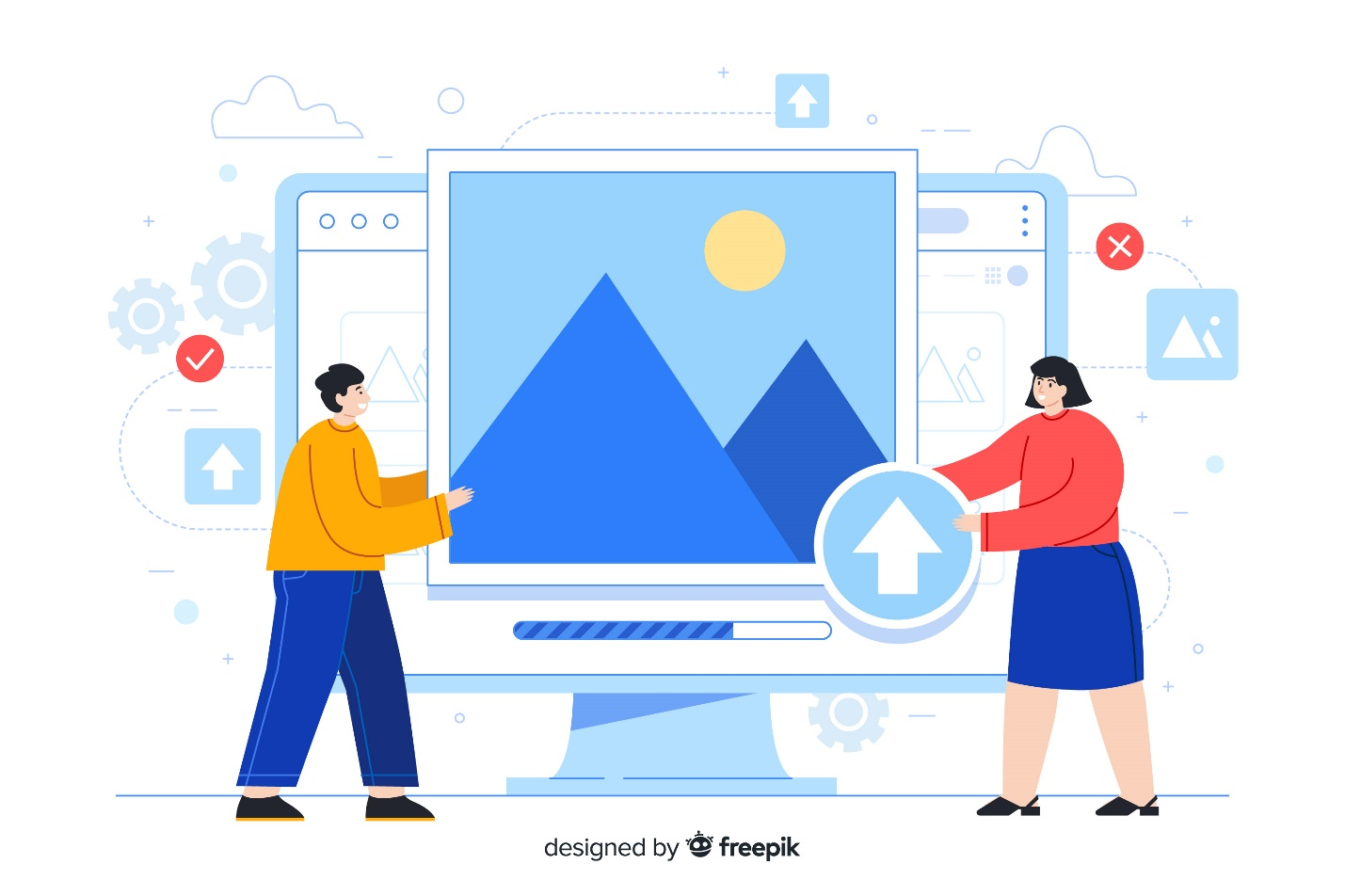
4. Image Alt Tags
Optimizing visual assets on your site for search engines and your web visitors is equally as important as adding meta tags (title and meta description).
According to Marketing Charts, more than 40% of users rely on images when shopping online.
Adding SEO-friendly alt text can improve your site’s search visibility on Google images.
Using customized file names (especially with keywords) can strengthen your on-page SEO game.
Finally, adding mobile-friendly visual assets gives you an edge over competitors that aren’t optimizing their site for mobile users.
Step 3: Optimizing Site Architecture Elements
Site architecture elements make up the entirety of your web page by linking it to external and internal sources.
A proper site architecture helps crawlers easily find new content on your site.
How you design this architecture plays a decisive role in your site’s position in the search results.
Website architecture falls under technical SEO. But, I am including it in this list of on-page SEO steps because it plays a part in creating a better on-page SEO experience.
1. URL Optimization
URL structure is vital because it helps search engines understand your web page or blog post.
Moreover, adding keywords to your URL might improve your search rankings because search engines will value your content above all else.
But don’t go overboard with keywords because that’s not going to work in your favor.
Instead, keep your URLs short and only add one keyword that describes the content of your page.
This helps search engines index your site faster, increasing your chances of securing a higher position in SERPs.
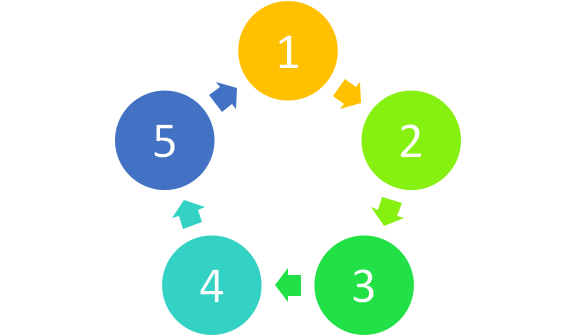
2. Internal Linking
Internal linking gets missed when we talk about on-page SEO, primarily because most SEOs don’t think it’s an important factor – especially if your site isn’t getting any traffic.
Contrary to popular belief, internal links are excellent even if your online business is in its growing phase. The reason for that is “link juice.”
When you add internal links to your blog posts, service, and other pages on your site, you share link equity (link juice), which is an important ranking factor.
In addition to that, internal links enhance your reader’s experience.
When readers can’t understand a specific topic you mentioned in your content, they can click on it and read more through your other blogs.
Every internal linking strategy is unique and connected with your overall on-page SEO goals. But it’s best to have at least 2-3 internal links in your content.
3. External Linking
Adding external links means linking to other websites within your industry in your blog posts.
It might seem illogical if you’re just starting on-page SEO, but external linking has benefits. For starters, external links add more credibility to your site’s content.
In addition, they improve your SEO because when you link high authority websites in your content, search engines look at your content favorably.
Finally, external links add more value for your readers because when you quote industry stats or data, adding external links validates your claim.
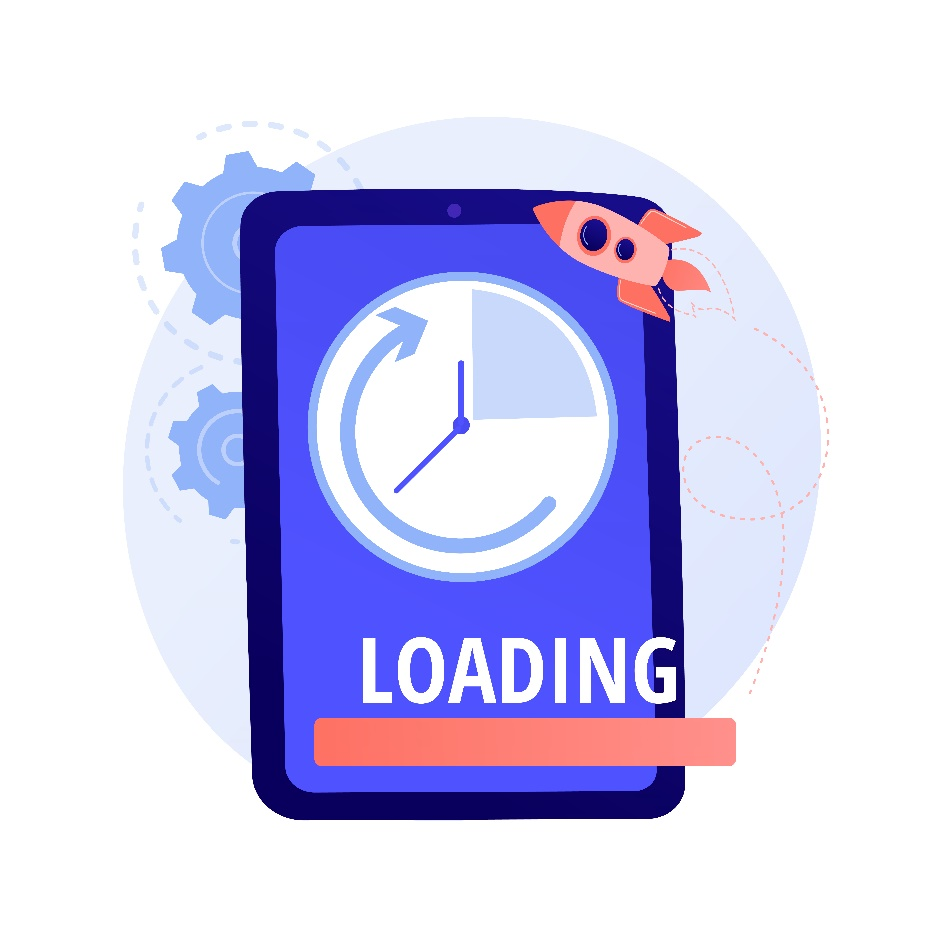
4. Site Speed – Every Second Counts
In today’s world of 5G and fast food, no one likes to wait, and your web visitors aren’t any different.
Whether on a mobile device or desktop, your site needs to load fast; I mean, it should load in under 2 seconds.
Because according to Google, sites that load between 1-3 seconds have the lowest bounce rate probability.
If your website doesn’t meet Google’s criteria, you can follow my steps below to improve your page speed.
How to Improve Site Speed For On-Page SEO?
Images, codes, and databases make up most of your website weight. Your site needs to go on a diet without hurting its functionality.
Here’s how you can achieve faster load time without breaking down your site.
A. Lazy Loading
You need to use a JPEG file format to cut down your image size without affecting its resolution.
If your site has numerous product images, you must ensure that your above-the-fold content doesn’t take too long to load.
Using the lazy loading CSS trick, you can configure your site to pause images below the fold and transfer maximum download speed to images above-the-fold (at the top).
This saves your site from a high bounce rate because content above the fold is given the highest priority meaning your visitors won’t notice if your site is lagging.
B. Minimize Your Site’s Code
Sometimes, extra spaces and symbols in the code become a nuance for your site, ultimately affecting its load speed.
Google recommends different tools to trim your site’s code without affecting its functionality.
In addition to heavy codes, outdated codes might cause fatal errors on your site. Therefore, it’s best to look into it and update any codes that aren’t up to the latest standards.
C. Clean Your Database
You may need to optimize your database if your site is hosted on a Content Management System (CMS) like WordPress.
Over time, draft posts, spam comments, and other textual encrypted data can take up too much space.
When your CMS database is full of things you don’t want, your site suffers in load time.
Cleaning your database every month is an excellent on-page SEO practice to keep your site smooth and fast in Google’s eyes.
Get Your On-Page SEO Factors in Check
Content is the heart of on-page SEO and from it, stems all the on-page SEO factors I have shared above.
Some of the things I have mentioned aren’t going to be as impactful on their own (title tag). However, this doesn’t mean you should overlook them.
On-page SEO is a holistic process that starts from your site’s content to its speed and everything in between.
If you miss even one step, you’ll jeopardize your reputation in the eyes of Google and your web visitors.
If you have too much on your plate, we can take care of your SEO activities.
Our expert SEO service offers extensive keyword research, content optimization, and more.
You can view more details by checking out our on-page SEO service page. Or give us a call at 855 444 4777.

